Bill Murray: ‘We are afraid to die and afraid to kill’
The comedy great sits down with classical cellist Jan Vogler and talks to Kevin E G Perry about the pandemic being this generation’s ‘most challenging time’, his cure for depression and shooting a majestic concert movie at the Acropolis of Athens

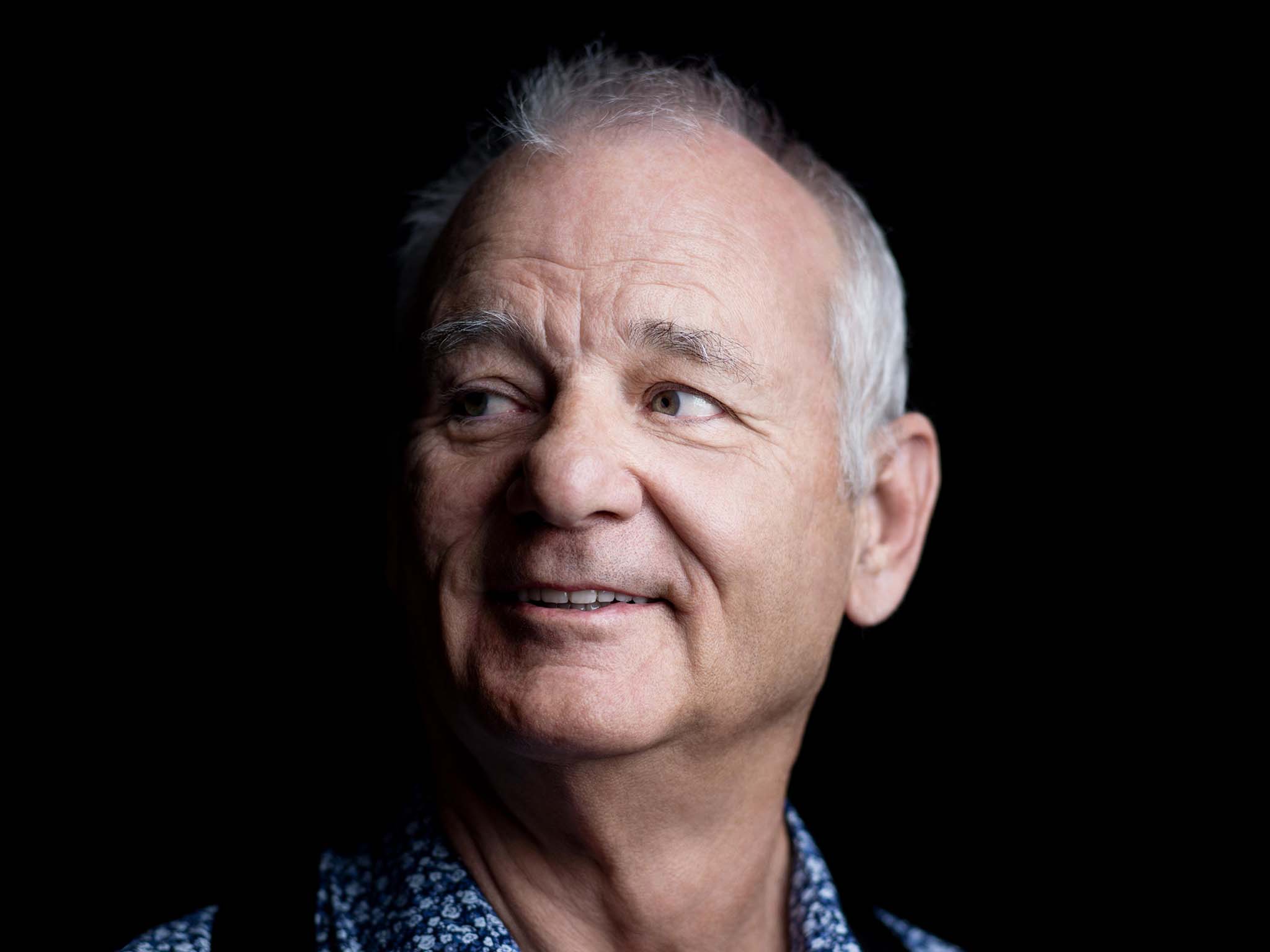
Can I tell you my Bill Murray story? A decade ago, I got a job working as a copywriter for a whisky company at the Cannes Film Festival. Our office was just off the lobby of the star-packed Hotel Martinez, and to celebrate opening night the hotel had given us a bottle of champagne. The very moment we popped the cork, as if summoned by the sound, Murray materialised in the room and asked: “Are we drinking?” Before we knew it, he was the one filling our glasses and regaling us with his plans to “cause mischief” at the festival. Our bosses at the whisky company were livid, of course. We’d somehow made Bill Murray appear in our office and all he’d drunk was champagne.
It’s been 45 years since Murray first burst into the public consciousness as a cast member of Saturday Night Live and in that time the deadpan comic actor has become almost as well known for turning up in unexpected places in real life as he is for starring in films such as Ghostbusters, Groundhog Day and Lost in Translation. There are countless Bill Murray stories, like the one about him rocking up to a student’s house party in Scotland and doing all the dirty dishes, or the time he drove a taxi from Oakland to Sausalito while the cab driver serenaded him with a saxophone from the back seat. He has crashed bachelor parties and wedding photo shoots, turning our ideas about the guarded, sheltered life of a celebrity on its head with spontaneous, Dadaist displays of playful curiosity.
Of all the unlikely places he’s appeared, the nearly 2,000-year-old stage of the Odeon of Herodes Atticus might just be the unlikeliest. The theatre, on the southwest slope of the Acropolis of Athens, is the setting for his new concert film, New Worlds: The Cradle of Civilization. It opens with footage of Murray clambering over the heads of his audience, a huge bouquet of red roses cradled in one arm as he flings the flowers one by one into the roaring crowd. Filmed in June 2018, at a time when the only thing he risked by impulsively climbing into a crowd of people was falling on his backside, it looks so carefree as to feel like a time capsule.
“It is a time capsule,” says Murray, inhaling sharply. “You just made me take a deep gasp of a breath.” He’s speaking over a video call from some anonymous hotel suite in New York, dressed in a grey button-up shirt and a black woollen beanie reminiscent of the red one he wore as the titular oceanographer in Wes Anderson’s The Life Aquatic with Steve Zissou. There’s nothing quite like a global pandemic, he says, to put the kibosh on spontaneous interaction. “We just went out with our friend to walk the dog, and you’re wearing a mask, everyone’s wearing a mask. The dog is the only one who’s completely alive!” he laments. “He’s living the dog’s life. The rest of us are afraid to die, and afraid to kill, so we’re masked up and we’re injected, and so forth. It’s the most challenging time of this life cycle for us. We didn’t have a world war or a depression, the things our ancestors had. This is the hand we got dealt and if you fold, you can’t win.”
Beside Murray sits Jan Vogler, a bespectacled German classical cellist in a de rigueur black polo neck. Vogler’s Bill Murray story might just be the best. In 2013, checking in for a flight from Berlin to New York, Vogler felt a tap on his shoulder. It was Murray, enquiring as to how Vogler was going to manage to fit his bulky cello case onto their flight. Clearly it wasn’t going to squeeze into an overhead locker. “I think he was scandalised when I told him my cello would have the window seat, but I argued that it has to sit there because if I sat in the window seat, I couldn’t escape,” explains Vogler, logically enough. As chance would have it, the two men and the instrument ended up next to each other on the flight, so Vogler took the opportunity to watch Murray’s 1981 military comedy Stripes for the first time. “I just thought that’s so special, having Bill next to me and watching Stripes,” says Vogler. “I enjoyed the film tremendously. It was my fantasy. If I ever joined the army, I would probably be as obnoxious as those guys.” Murray’s mouth curls into a smile. “He didn’t know why I was in first class,” he deadpans, “and then he realised my film was on the flight.”
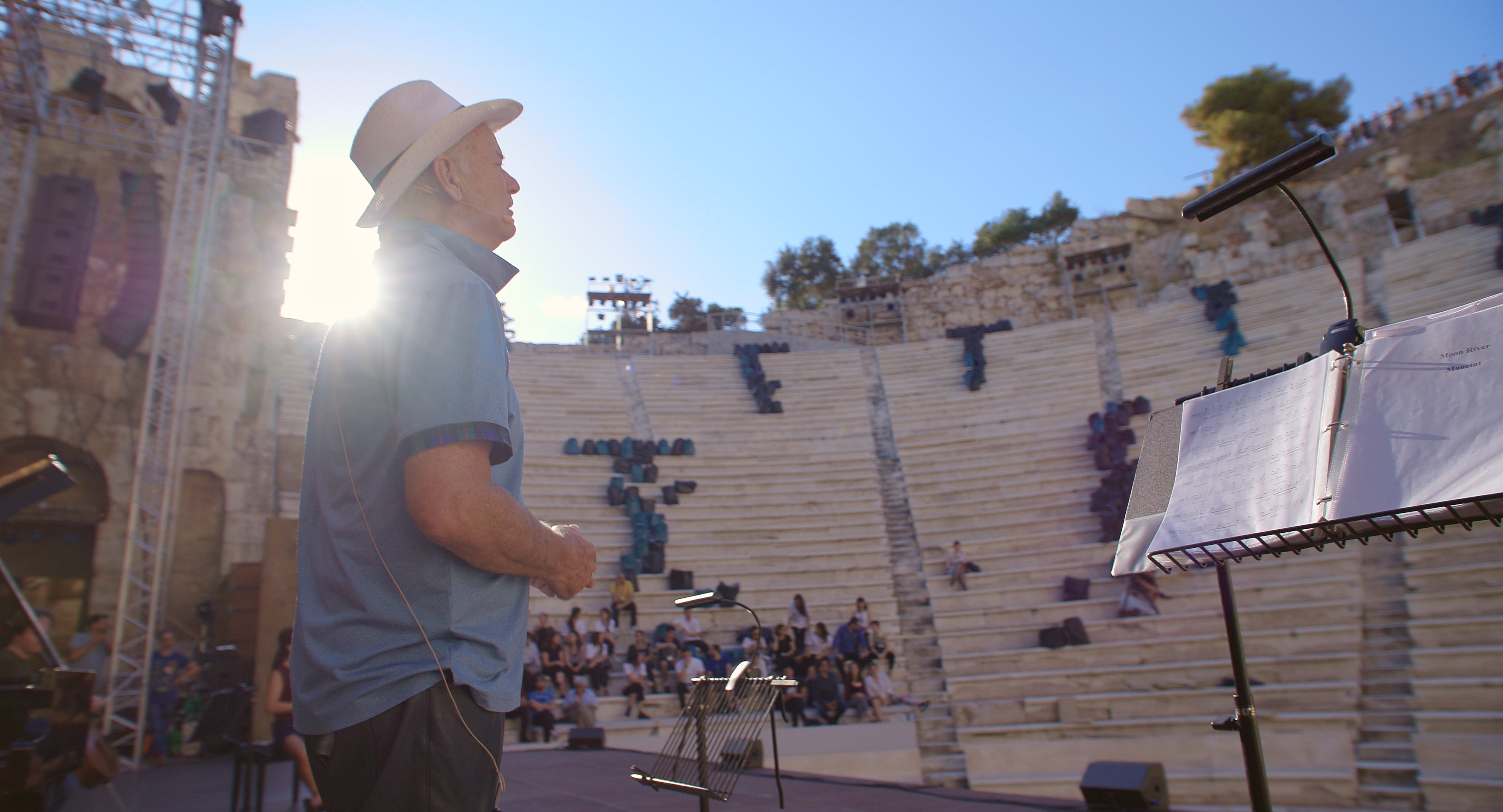
From that initial meeting, a friendship blossomed. A couple of years later, Murray invited Vogler on a poetry walk around New York, at which Murray recited Walt Whitman’s “A Song for the Open Road”. The pair shared a love of classical music and literature, and the seeds of a collaboration were planted. Together they dreamed up a show that would put the finest works of American literature into dialogue with the great works of European classical music. In the wake of the election of Donald Trump as president in 2016, they felt their idea could help reawaken a conversation about exactly what we mean when we talk about “American values”.
America has been seen as isolationist, but I don’t think most Americans feel that way
“When we started, America was in some sort of eclipse, to my mind,” says Murray. “I felt like people didn’t know what the hell they made of America any more. We roll with this good guy image, where we bail everybody out and we help people and so forth, but it seemed like those doors were closed to the world. Somehow we were being represented as isolationist and disrespectful towards the rest of the world, and I don’t think most Americans feel that way.”
The pair put together a setlist that included classical pieces by Shostakovich, Schubert and Bach, readings from American authors such as Whitman, James Fenimore Cooper and Ernest Hemingway, songs by Tom Waits and Van Morrison, and a smattering of show tunes. Vogler brought in violinist Mira Wang and pianist Vanessa Perez to back Murray on the mic, and the quartet took their show on the road from 2017 to 2018, playing 63 gigs in more than 20 countries. Murray is well aware that many of his fans might not associate him with such highbrow material, but that was part of the appeal. He wanted to find a way to make it accessible, and he jokes irreverently early on in the filmed performance that: “This stuff, it’s just junk, what we’re doing.” He’s willing to meet the audience halfway.
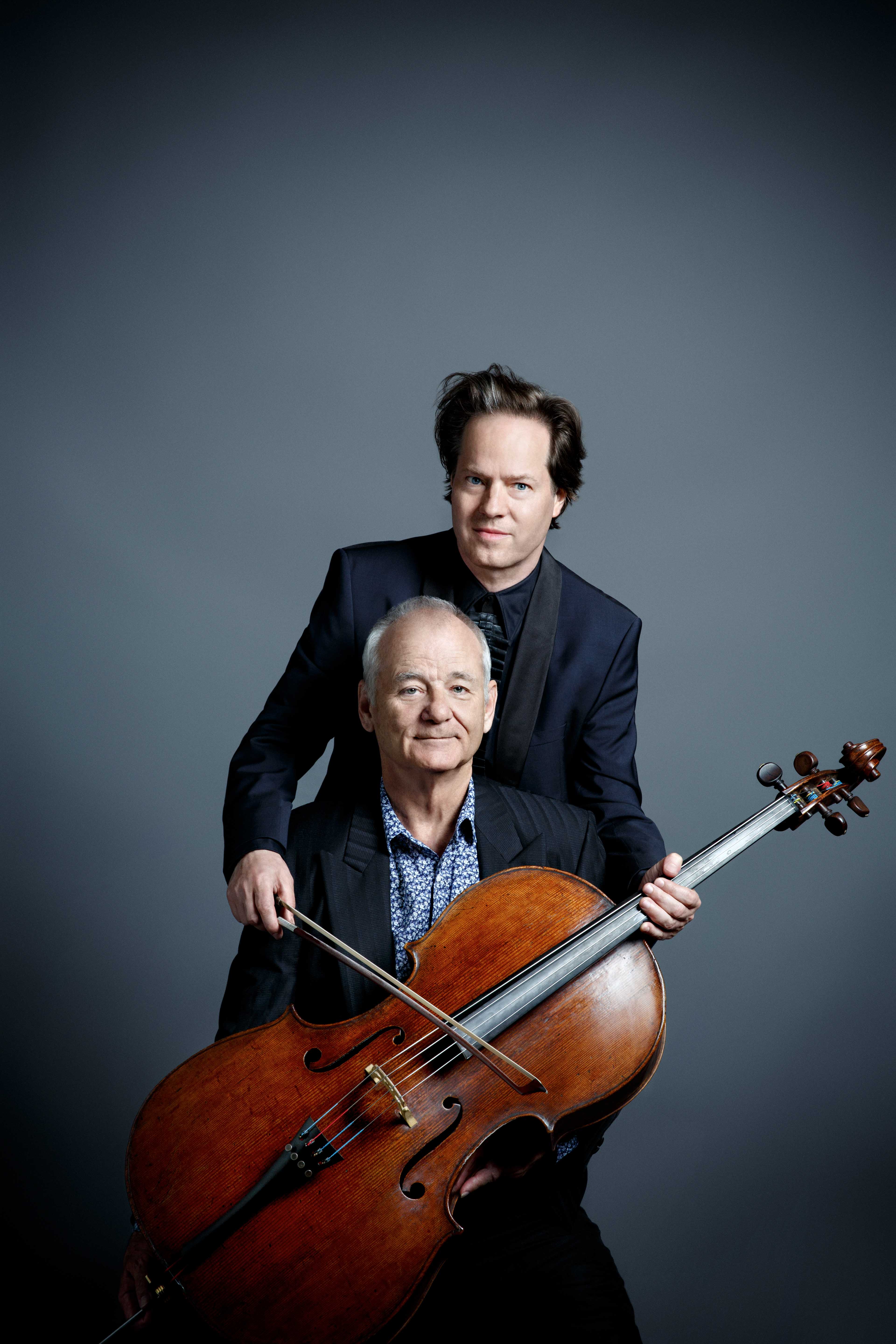
“There’d be people going: ‘Oh, I like that guy Bill Murray. I’ve seen his movies. He’s funny,’” says Murray. “And then after the first three songs they’re like: ‘What have we gotten into here? Has this guy had a stroke or something? This is not the guy we knew!’ Not that I took it all that personally, but I felt like you could feel in the audience a sense of: ‘Ah nuts!’ So I said that really naturally one night and it got such a good reaction that it sort of broke the tension. People were like: ‘OK, I can handle one more’. Then they were rewarded with another one that was lighter and more fun and more agreeable.”
Enjoy unlimited access to 100 million ad-free songs and podcasts with Amazon Music
Sign up now for a 30-day free trial. Terms apply.
ADVERTISEMENT. If you sign up to this service we will earn commission. This revenue helps to fund journalism across The Independent.
Enjoy unlimited access to 100 million ad-free songs and podcasts with Amazon Music
Sign up now for a 30-day free trial. Terms apply.
ADVERTISEMENT. If you sign up to this service we will earn commission. This revenue helps to fund journalism across The Independent.
That’s not to say the show is devoid of Murrayisms. One of the most telling pieces in the performance is a passage from A Moveable Feast. In it, Hemingway meets a painter, Pascin, who is sitting in a bar with two beautiful sisters. They talk and flirt, but at the end of the story, we learn that much later Pascin took his own life. Hemingway tries to remember him as happy, writing: “They say the seeds of what we will do are in all of us, but it always seems to me that in those who make jokes in life the seeds are covered with better soil and with a higher grade of manure.”
It’s a line that could be Murray’s epitaph. “The ‘higher grade of manure’ line sounds like just a joke, but it really means that you’ve digested a finer kind of material,” he says. “There’s something that you’ve taken in, that you manage to make part of you. The byproduct is something that’s valuable to the next stage of life, whether it be a plant or a person. I love that. The fact that he’s able to tell that amusing story with the sad finish of the taking of his own life, and just say that there was a positive outcome, that something good came from knowing that man, that you’re not left with sadness, that he gave more than he took, and he left something behind.”
If the show starts slow and heavy, it ends with playful lightness with a medley of songs from West Side Story. Vogler, Wang and Perez make dazzling work of Leonard Bernstein’s music, while Murray skips around the stage belting out Stephen Sondheim lines. “Those words have so much hope, and so much reality to them,” he says. “‘I Feel Pretty’ is just joyous. Someone saying: ‘I’m as pretty as anybody in the world right now, because I’m in love.’ I mean, that’s it, isn’t it?”
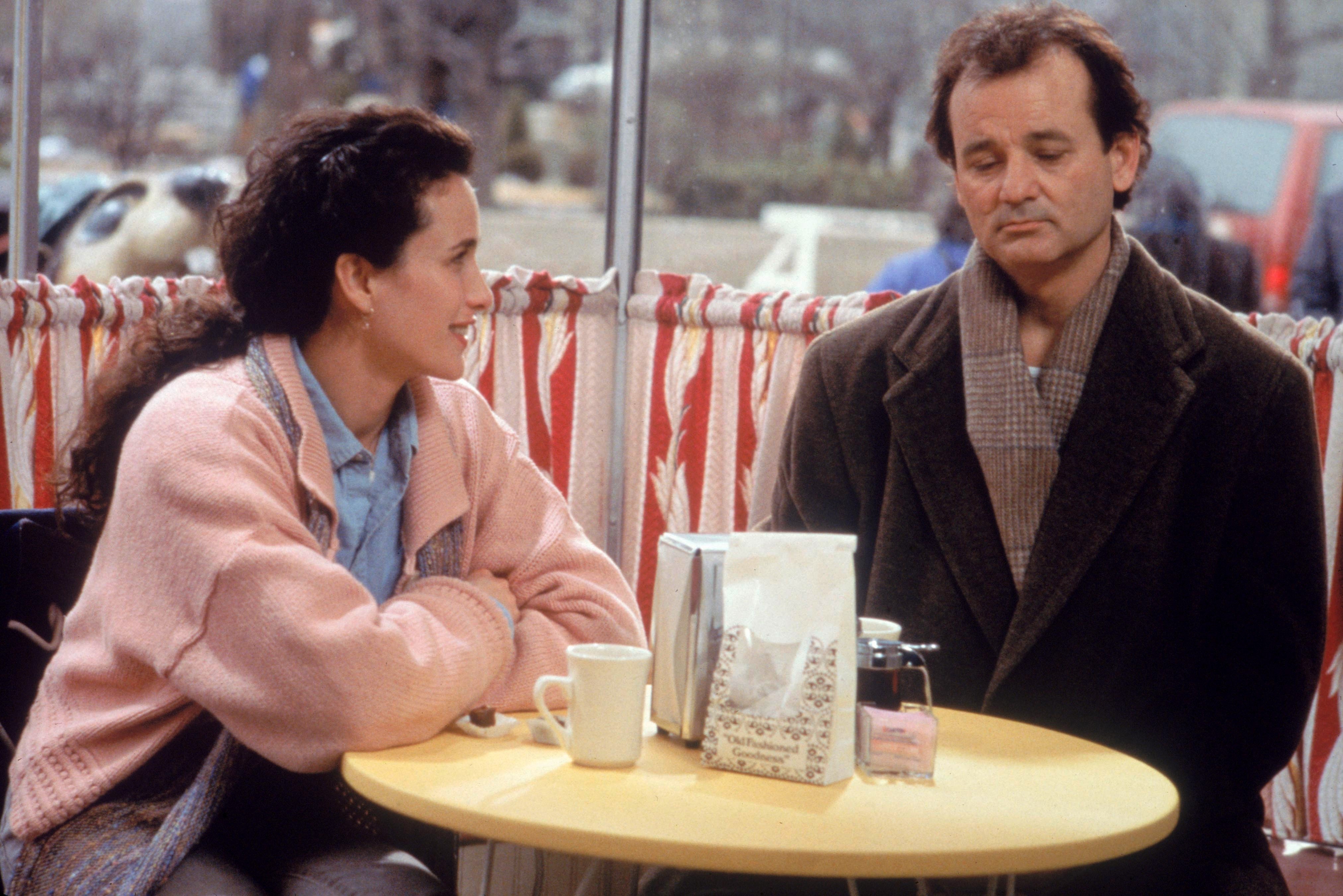
Sondheim, who died last year, once expressed his desire to turn Murray’s philosophical 1993 comedy Groundhog Day into a musical. It never happened, with Sondheim commenting in 2008: “I feel to make a musical of Groundhog Day would be to gild the lily. It cannot be improved; it’s perfect the way it is. I don’t want to touch it, because it’s perfect.” Murray took that as a high compliment, although today he says it’s a shame we’ll never hear Sondheim’s version. “I heard that Sondheim was one of a number of lyricists who thought the ultimate challenge was to make a musical of Groundhog Day,” he says. “That guy was a powerful visionary. He could say things, so I wish he’d given it a stab. I would love to see what he’d done with it. Even if he thought it was difficult, I know that it would have been such a blessing.”
Murray’s charming onscreen presence and apparent ability to live life in the moment has, it’s been argued, obscured his sometimes truculent behaviour. He had a long falling out with Stripes co-star and Groundhog Day director Harold Ramis, while his Charlie’s Angels co-star Lucy Liu has said he told her on set that she couldn’t act. Ghostbusters writer and co-star Dan Aykroyd referred to him as “the Murricane” because of his volatility. Clearly, there is a darker side to Murray’s persona, and he has made no secret of depressive episodes in the past. Music, he says, has often been his saviour. Although he didn’t perform it in Athens, one song that Murray performed while touring America was “Angel from Montgomery” by the late John Prine, a friend of Murray’s and an artist he credits with rescuing him at his lowest.
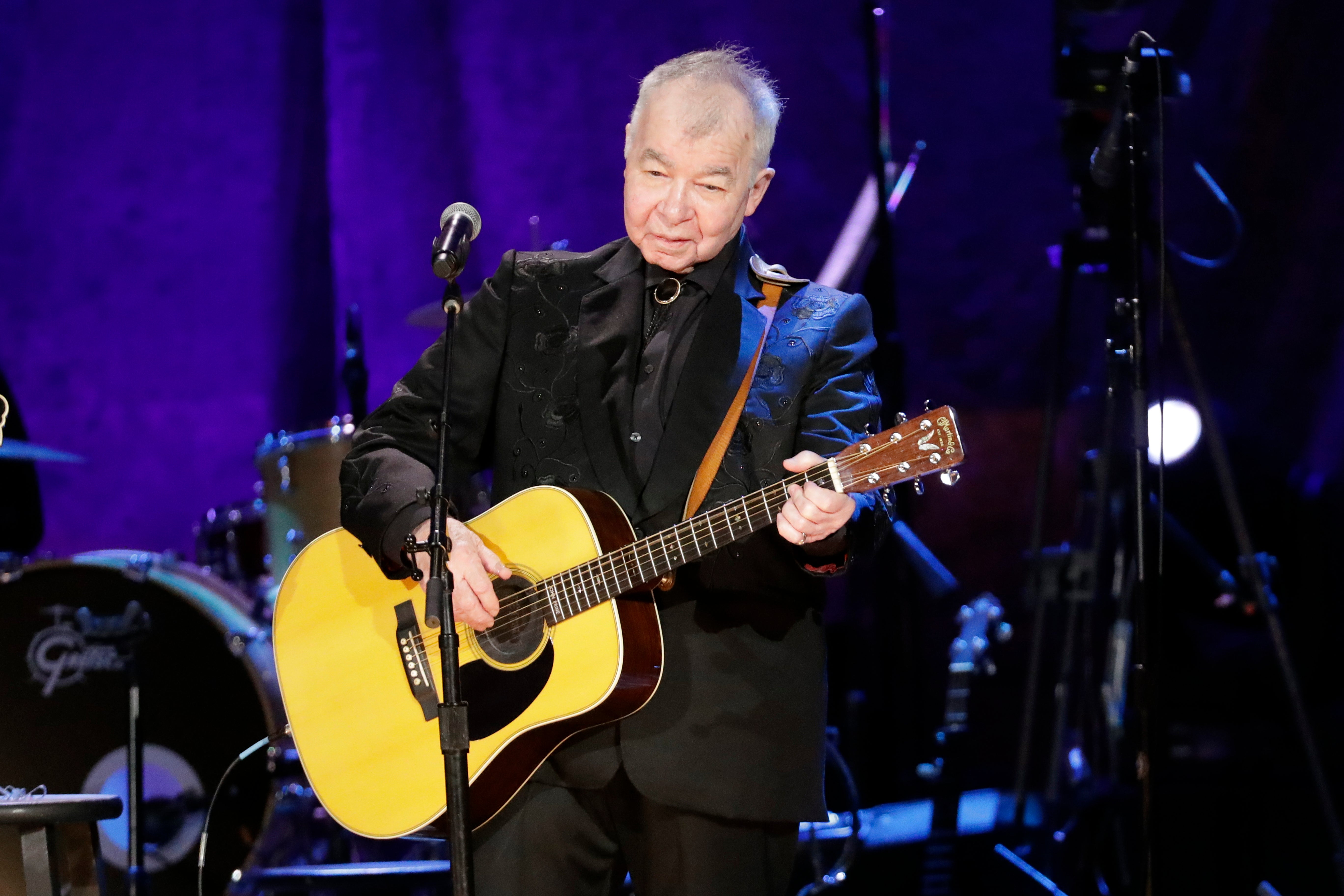
“I remember my friend Hunter Thompson, who was another guy people perceived as sort of a dark force but who really had a wonderful sense of humour, talking about John Prine,” says Murray, recalling the time he spent with the gonzo journalist at his compound in Colorado. “I remember at one of the moodiest… What did he used to call it? Broodingest! …at one of the broodingest moments of our long weekend, he said: ‘Well, we’ll have to rely on John Prine for the sense of humour.’ And he put on some, and it was dark out there in the mountains, and we did listen to John Prine for a while. There was a moment where I was the most miserable of my whole life, so I thought, I’ll go see if John Prine will help me here. His song ‘Linda Goes to Mars’ comes on and I just remember going: ‘Heh’.” The corners of Murray’s mouth turn up almost imperceptibly, expressing the smallest possible quantity of amusement. “That was it. That was all there was, but it was a change of direction. I thought: ‘Goddammit, it worked!’ I hadn’t even ‘Heh’d’ in such a while.”
Sometimes a “Heh” is all you need. It is the power of great art to lift our spirits even in the darkest of times, which explains the appeal of watching Murray cavorting happily around the Acropolis while Vogler, Wang and Perez bring timeless music to vivid life behind him. The setting, Murray says, helped put everything into perspective for him.
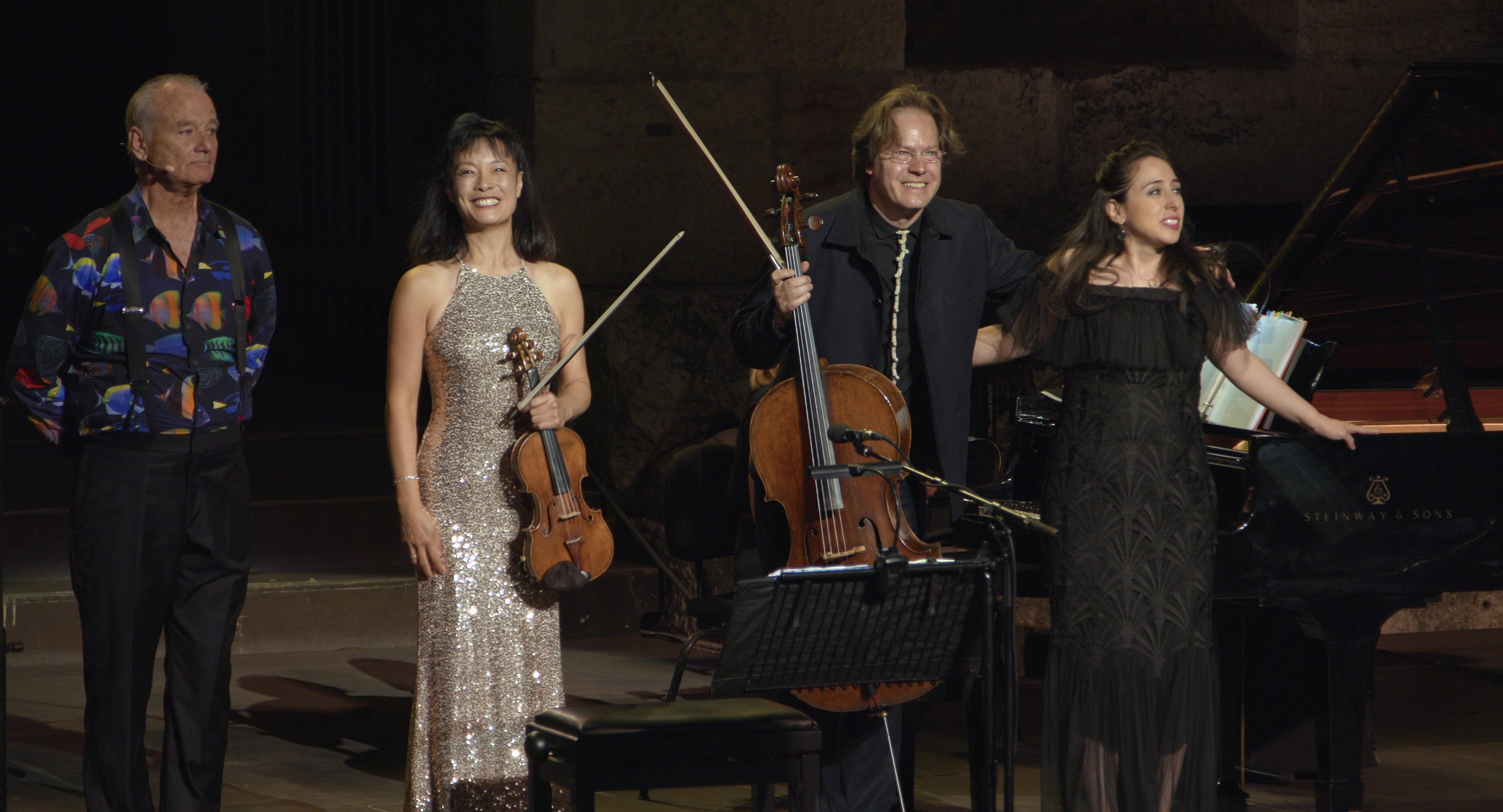
“It was extraordinary,” says Murray, his eyes lighting up. “If you looked up, you could see the Parthenon. You go: ‘Oh, my God, look where I am!’ It’s such a powerful reminder: ‘Hey, fella, this is your life. You better live it right now, get back to where you’re supposed to be inside and live and give everything you can right now. Everything. In the film, when you see us on the stage, the backdrop is this 2,000-year-old building. It makes us seem almost transparent. These people could be exchanged for someone 500 years earlier, or a 1,000 years earlier, and they’re just going to be here for a second and then they’ll be gone. You feel like you’re… maybe not exactly nothing, but you’re close. Close. And that realisation spurs you to work a little bit harder.”
Bill Murray and Jan Vogler’s ‘New Worlds: The Cradle of Civilization’ is in cinemas from 22 March
Join our commenting forum
Join thought-provoking conversations, follow other Independent readers and see their replies
Comments
Bookmark popover
Removed from bookmarks